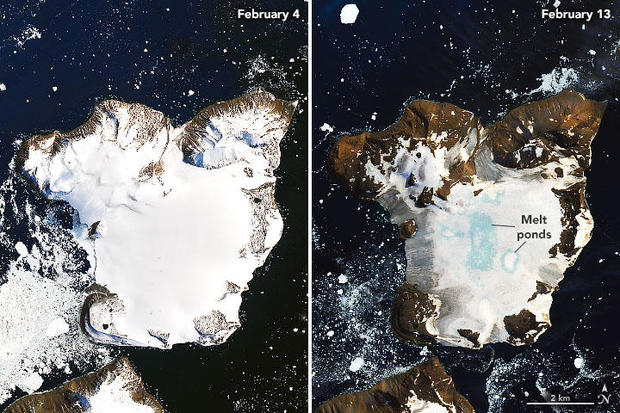NASA satellite images reveal dramatic melting in Antarctica after record heat wave
Earlier this month, temperatures in Antarctica appeared to reach a record-breaking 64.9 degrees Fahrenheit, matching the temperature in Los Angeles that day. New images released by NASA show the dramatic ice melt caused by the heat wave, a phenomenon that is becoming more and more common in the peninsula.
NASA's Earth Observatory released two new images Friday by the Operational Land Imager on Landsat 8 that show the difference on the Eagle Island ice cap between February 4 and February 13.
The before-and-after snapshots show a dramatic decrease in ice and snow along the northern tip of the Antarctic peninsula. In the later shot, a large portion of the ground is visible, as are bright blue melted ponds in the center of the island.
Eagle Island is only about 25 miles from Argentina's Esperanza research base, which recorded the potentially record-high temperature on February 6. According to NASA climate models, the island experienced peak melt — about 1 inch — on that same day, leading to a loss of 4 inches total in a one-week period.
Read complete at CBS News

















